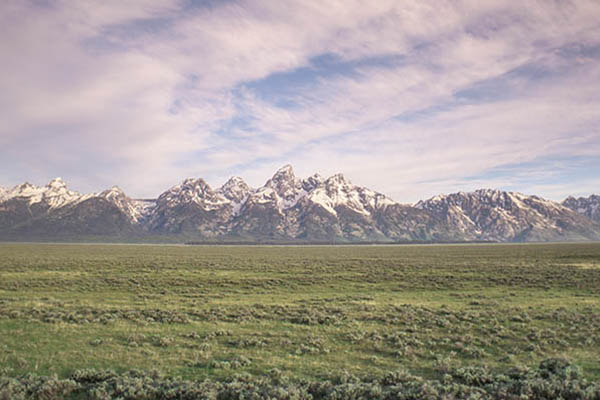By Shan Burson, Bioacoustic Ecologist

The rare Townsend’s big-eared bat. Photo from NPS.
Next time you are in Grand Teton during warm weather months, look up in the evening and you may see the swirling, whirling flight of bats. Unlike some bats in other parts of the world that eat fruit, nectar, fish or even blood, our airborne mammals are catching insects. Insectivorous bats consume huge quantities of insects each night during foraging flights. Depending on body size and mouth parts, they tend to specialize on certain insect types, such as beetles, mosquitoes, or moths.
All insectivorous bats locate their prey and avoid obstacles in the dark by using high pitched vocalizations and specialized ears. This echolocation, which is similar to radar, not only enables bats to fly in the dark but is also something researchers can use to study bat presence, habitat use, and even help identify species. Similar to bird songs, many species of bats have unique echolocation calls that can be documented and identified with the use of sound recorders and ultrasonic microphones (most echolocation is too high pitched for humans to hear).
Grand Teton biologists utilized these tools for the first time last fall to assess which bats are present near seasonal housing complexes at Highlands and Lupine Meadows, where bat use of buildings—an undesirable situation for several reasons—is common. The park found preliminary evidence of nine species in these two prime habitats alongside Cottonwood Creek, plus one Townsend’s big-eared bat—a rare moth-eating species considered to be extremely sensitive to human disturbance.
By the end of September, the number of bats plunged to only a few, but surprisingly, the last individuals kept flying until early November. Many of the park’s bats migrate, but to where and when are largely unknown. Some, like the big-eared bat, are year-round Wyoming residents that hibernate during winter. Though many bat species take advantage of buildings and other human structures for roosting, others roost under bark, in dense tree foliage, and in caves.
Which bats are year-round inhabitants versus seasonal residents, how long they stay here, and where they live while in the park are just a few of the questions Grand Teton biologists hope to disentangle in the coming years. The answers will help us manage and conserve these special and little known mammals of the night, while reducing the potential hazards of humans and bats living in close quarters.










